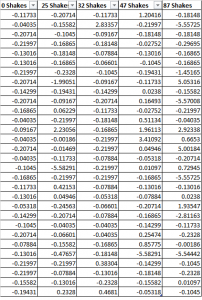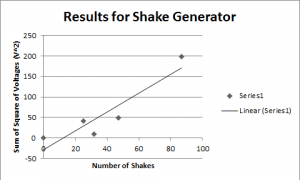In our Sustainability, Energy and Technology class we discussed Faraday’s law (changing magnetic fluxes coiled wires generate electricity). We ran an experiment to test Faraday’s law.
The following was the assignment:
“Equipment:
- One generator (magnet that moves back and forth inside a coil of wire)
- One voltage probe
- One NXT adaptor
- NXT
- Labview VI generator_lab.vi
- Excel sheet
Introduction: Faraday’s Law states that changing magnetic fluxes through coiled wires generate electricity (currents and voltage). The greater is the change in magnetic flux, the greater are the currents and voltages. In this lab you will be shaking a tube which has a magnet that will travel back and forth through a coil of wires. You will show that the faster you shake the tube, the greater will be the generated voltage.
Procedure: Your instructor will review the generator_lab.vi with you so that you will be able to understand how to use it to measure the voltage output of the generator. Your task is to correlate the number of shakes of the generator, in a thirty second time interval, with the voltages (or more precisely the sum of the square of the voltages) that the generator generates.” (Shatz)
Our outcomes for the experiment were as follows:
The experiment was important because without Faraday’s law and his study modern life would be completely different, Faraday’s law is the reason there are electric generators and electric motors.
Our results went as expected, the more the generator was shaken in the same time frame the higher the voltage readings were. One issue with the readings from the experiment is there was still minimal electrical current when there was no movement on the generator. This may have skewed the results slightly and gave us higher readings there were present. The independent value in this experiment was the amount of shakes in the thirty second time period and the dependent value was the average voltage reading given after the shakes.
Works Cited:
Shatz, Lisa. “Generator Lab.” Http://web.cas.suffolk.edu/. N.p., n.d. Web. 3 Nov. 2015.

